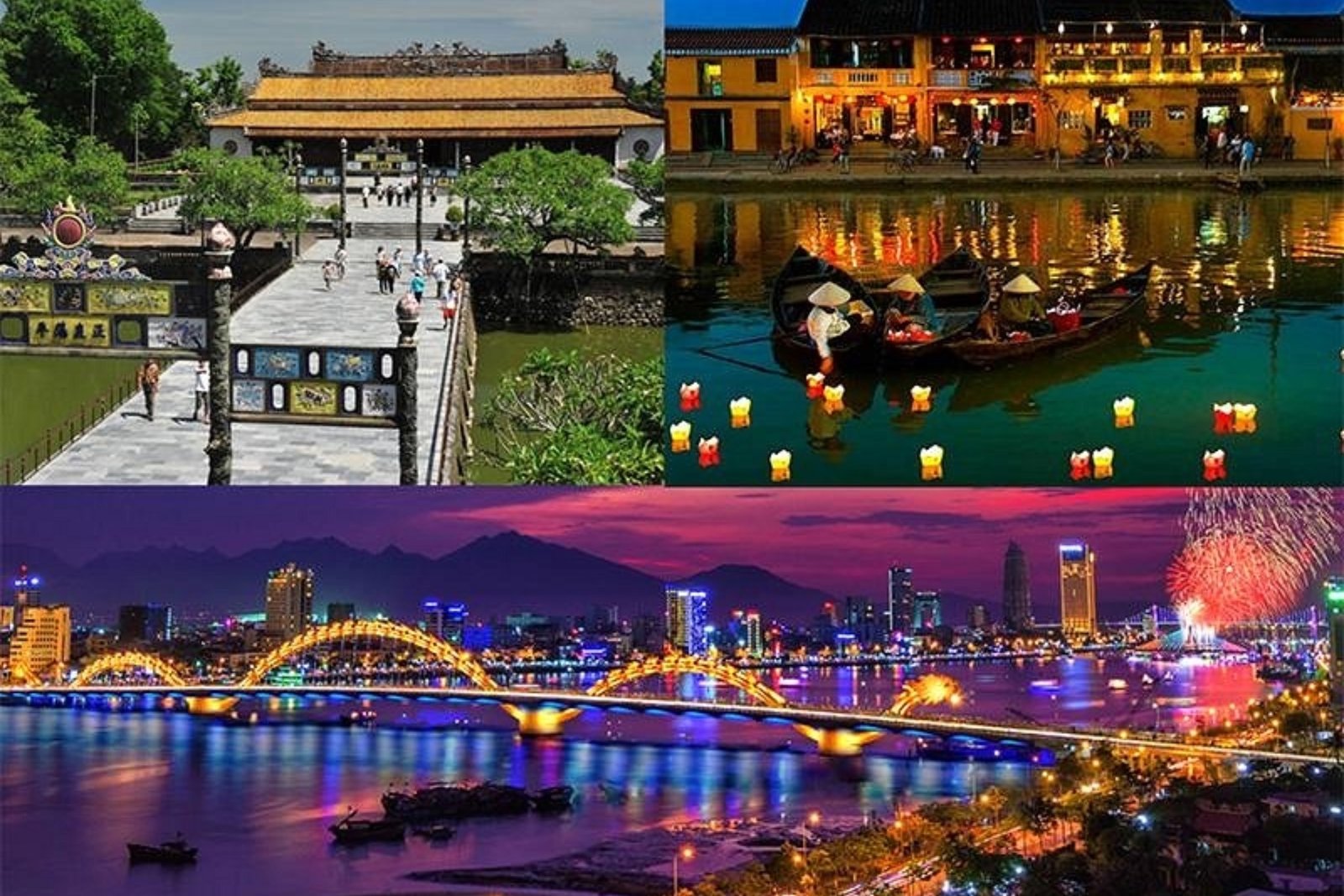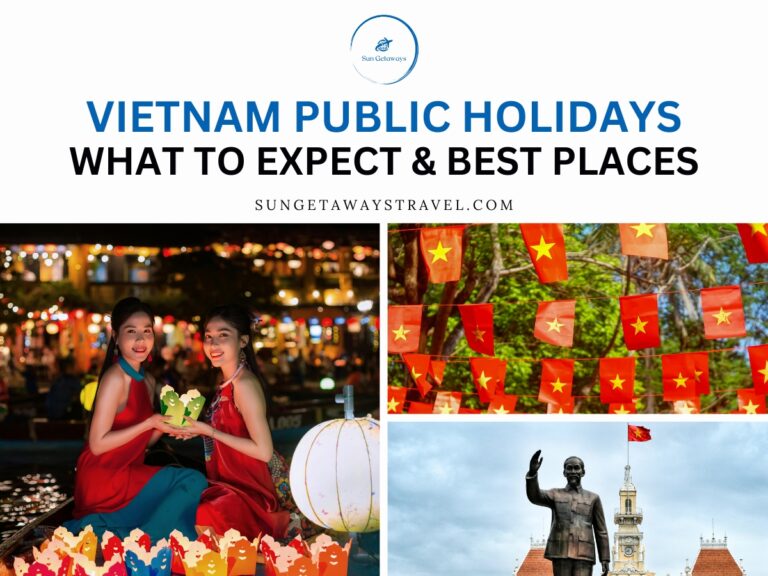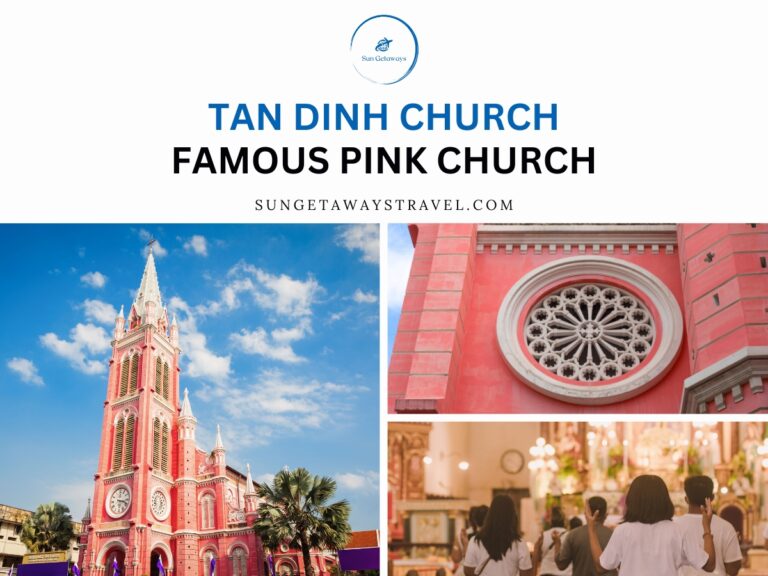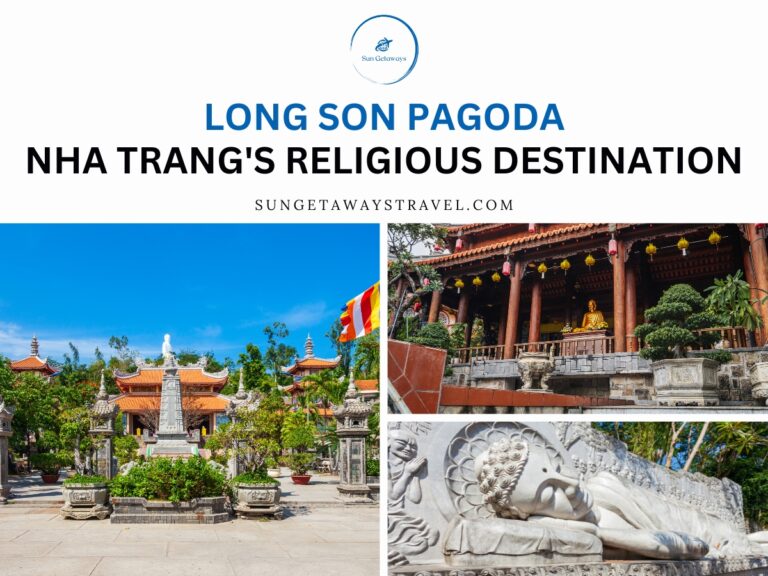Hue and Hoi An: Which Ancient City Should You Visit?
 ngocdiem
ngocdiem Choosing between Hue and Hoi An can be challenging, as both cities offer unique cultural and historical experiences. While Hue immerses visitors in Vietnam’s imperial past with its majestic citadel and royal tombs, Hoi An enchants travelers with its well-preserved ancient town and vibrant lantern-lit streets. Whether you seek history, scenery, or local charm, comparing Hue and Hoi An will help you decide which destination best suits your journey.
1. Hue and Hoi An: A Quick Comparison
Both Hue and Hoi An are must-visit destinations in Central Vietnam, but they offer distinct experiences. While Hue showcases Vietnam’s royal history, Hoi An is a beautifully preserved ancient trading port with a lively cultural scene. Below is a quick comparison of Hue and Hoi An based on key aspects:
| Comparing Hue and Hoi An | Hue | Hoi An |
| Historical Significance | Former imperial capital, home to the Nguyen Dynasty | Ancient trading port influenced by Chinese, Japanese, and European cultures |
| Architecture | Majestic citadel, royal tombs, pagodas | Well-preserved Old Town, wooden shophouses, Japanese Covered Bridge |
| Cultural Experiences | Traditional music, boat rides on the Perfume River, incense-making villages | Lantern festivals, cycling tours, cooking classes |
| Scenery & Nature | Hai Van Pass, Perfume River, Thuan An Beach | An Bang Beach, Cham Islands, Bay Mau Coconut Forest |
| Food Specialties | Royal cuisine, Bun Bo Hue, Banh Beo, Hue sweet soup | Cao Lau, Mi Quang, Banh Mi Phuong, fried wontons |
| Transportation | More spread out, requires taxis, motorbikes, or cyclos | Compact and walkable, bicycles and boats are common |
| Vibe & Atmosphere | Quiet, historical, and traditional | Lively, colorful, and romantic |


2. Historical and Cultural Attractions
When it comes to history and culture, both Hue or Hoi An have distinct yet equally fascinating offerings.
2.1. Hue: The Imperial City of Vietnam
As the former imperial capital, Hue is deeply rooted in Vietnam’s royal past. The city’s most famous landmark, the Imperial City, is a sprawling complex of palaces, temples, and courtyards that once served as the seat of the Nguyen Dynasty. Visitors can also explore the Nguyen Dynasty tombs, each with its unique architecture and serene landscape. The Thien Mu Pagoda, perched on a hill overlooking the Perfume River, is another iconic symbol of Hue’s spiritual and historical heritage.


2.2. Hoi An: A Timeless Trading Port
In contrast, Hoi An flourished as a vibrant trading hub from the 15th to the 19th century, influenced by Chinese, Japanese, and European merchants. The Ancient Town is a UNESCO World Heritage Site, known for its well-preserved Japanese Covered Bridge, historic shophouses, and atmospheric alleyways. The Fujian Assembly Hall stands as a testament to the Chinese influence in Hoi An, while traditional craft villages keep age-old customs alive, offering hands-on experiences like lantern making and wood carving.


3. Natural Landscapes and Scenery
Aside from their cultural heritage, Hue and Hoi An also differ in terms of natural landscapes and outdoor experiences.


Hue: Majestic Mountains and Serene Waters
Surrounded by breathtaking natural beauty, Hue offers a mix of coastal and mountainous landscapes. The Hai Van Pass, a stunning coastal road, provides panoramic views of the sea and lush mountains. Nature lovers can relax at Thuan An Beach, a peaceful spot just outside the city, or visit the Lap An Lagoon, where calm waters reflect the surrounding mountains, creating a mesmerizing scene.
Hoi An: Coastal Beauty and Unique Ecosystems
Hoi An, on the other hand, is famous for its picturesque beaches and lush waterways. An Bang Beach is a popular spot for sunbathing and water sports, while the Cham Islands offer excellent snorkeling and diving opportunities. For a unique natural experience, the Bay Mau Coconut Forest lets visitors explore a waterway ecosystem similar to the Mekong Delta, with traditional basket boat rides through dense palm groves.
4. Food and Culinary Experiences
One of the biggest highlights when comparing Hue and Hoi An is their diverse and flavorful cuisine. Each city has its own unique dishes that reflect its cultural influences and historical significance.
Hue: The Elegance of Royal Cuisine
As the former imperial capital, Hue is famous for its royal cuisine, which emphasizes refined presentation and delicate flavors. Some must-try dishes include:
- 📍 Bun Bo Hue – A rich, spicy beef noodle soup with lemongrass and shrimp paste.
- 📍 Banh Beo – Small steamed rice cakes topped with shrimp, crispy pork, and scallion oil.
- 📍 Banh Nam – Flat, steamed rice dumplings wrapped in banana leaves, filled with shrimp and pork.
- 📍 Hue sweet soup (Che Hue) – A variety of colorful, sweet desserts made from beans, fruits, and coconut milk.


✨ See more: Hue Cuisine: Discover the Royal Flavors of Vietnam’s Heritage
Hoi An: A Fusion of Flavors
Hoi An’s cuisine is deeply influenced by its past as a bustling trading port, blending Chinese, Japanese, and Vietnamese flavors. Popular dishes include:
- 📍 Cao Lau – A signature noodle dish with pork, crispy croutons, and herbs, unique to Hoi An.
- 📍 Mi Quang – A turmeric-infused noodle dish with shrimp, pork, peanuts, and fresh greens.
- 📍 Banh Mi Phuong – One of Vietnam’s most famous banh mi sandwiches, known for its crispy bread and flavorful fillings.
- 📍 Fried wontons – Crispy wontons topped with a sweet and sour tomato-based sauce.


✨ See more: Hoi An Street Food – Top 10 Must-Eat Dishes In The Ancient Town
5. Local Experiences and Activities
Beyond sightseeing and food, Hue and Hoi An offer unique local experiences that allow travelers to immerse themselves in Vietnamese culture.
Hue: A Journey Through Tradition
Hue provides a glimpse into Vietnam’s imperial past through traditional activities:
- 📍 Hue Perfume River boat rides – Enjoy a peaceful cruise along the Perfume River, often accompanied by live performances of traditional Hue folk music.
- 📍 Traditional Hue music – Experience the enchanting melodies of nha nhac (court music), which was performed during the Nguyen Dynasty.
- 📍 Thuy Xuan incense village – Visit a colorful village where artisans handcraft vibrant incense sticks, a centuries-old tradition in Hue.
✨ Explore: Hue Festivals: A Celebration of Culture and Tradition
Hoi An: A Hands-On Cultural Experience
Hoi An, known for its interactive and artistic atmosphere, offers activities that let visitors engage with the local culture:
- 📍 Cycling around the Old Town – Rent a bicycle and explore the charming streets, rice paddies, and riverside areas of Hoi An.
- 📍 Releasing lanterns – Participate in the magical Full Moon Lantern Festival by lighting and floating paper lanterns on the Thu Bon River.
- 📍 Lantern-making workshops – Learn how to craft your own traditional Hoi An lantern as a unique souvenir.
- 📍 Cooking classes – Join a local cooking class to learn how to prepare authentic Hoi An dishes like Cao Lau and White Rose dumplings.


✨ Explore: Hoi An Lantern Festival – The Ancient Town’s Most Stunning Event
6. Accessibility and Transportation
When deciding between Hue and Hoi An, it’s essential to consider how easy it is to reach and travel around each city. Both destinations are well-connected, but they offer different transportation options for visitors.
6.1. Getting to Hue or Hoi An
- 📍 By Flight: Hue is served by Phu Bai International Airport (HUI), about 15 km from the city center. Hoi An does not have an airport, so travelers must fly into Da Nang International Airport (DAD), about 30 km away, and then take a taxi or bus to Hoi An.
- 📍 By Train: Hue has a major train station on Vietnam’s North-South Railway, making it accessible by train from cities like Hanoi, Da Nang, and Ho Chi Minh City. Hoi An does not have a railway station, so travelers must stop at Da Nang and continue by bus or taxi.
- 📍 By Bus: Both cities are reachable by long-distance buses. Many open-tour buses run routes between Hue and Hoi An, making it easy to visit both places in one trip.
6.2. Getting Around Hue and Hoi An
Both Hue or Hoi An cities offer various transportation options, but the experience differs:
- 📍 Hue: Visitors can use taxis, cyclos (three-wheeled bicycle taxis), bicycles, and motorbike rentals to explore the city and nearby attractions like the Imperial City and royal tombs.
- 📍 Hoi An: The Old Town is mostly pedestrian-only, so bicycles and walking are the best ways to get around. For exploring further areas like An Bang Beach or the countryside, motorbike rentals and taxis are available.
🌟 For more information Hue and the latest updates, contact us via WhatsApp or visit the Sun Getaways Travel Fanpage, Tik Tok Or follow these posts to get the details if you want to:
7. Accommodation and Cost of Travel
Both Hue and Hoi An offer a wide range of accommodations, from budget hostels to luxury resorts, making them accessible to all types of travelers.
Accommodation Options in Hue and Hoi An
- 📍 Hue: The city has a variety of hotels, boutique guesthouses, and riverside resorts. Travelers can stay near the Perfume River for scenic views or close to the Imperial City for easy access to historical sites.
- 📍 Hoi An: Hoi An’s accommodations range from charming homestays in the countryside to luxurious beachside resorts. Staying within the Old Town offers a unique, atmospheric experience, while beach lovers may prefer resorts near An Bang Beach.


✨ Explore: Hue Itinerary: Planning Your Trip to the Imperial City
Cost of Travel: Hue and Hoi An
| Comparing Hue and Hoi An with cost | Hue | Hoi An |
| Accommodation | Budget hostels: $10–$20 | Budget hostels: $10–$25 |
| Mid-range hotels: $25–$60 | Mid-range hotels: $30–$70 | |
| Luxury resorts: $80+ | Luxury resorts: $100+ | |
| Food | Street food: $1–$3 per meal | Street food: $1–$5 per meal |
| Mid-range restaurants: $5–$15 | Mid-range restaurants: $7–$20 | |
| Fine dining: $20+ | Fine dining: $25+ | |
| Transportation | Taxi: $0.60/km | Taxi: $0.65/km |
| Bicycle rental: $2–$5/day | Bicycle rental: Free at many hotels | |
| Motorbike rental: $5–$10/day | Motorbike rental: $7–$12/day |
Both Hue and Hoi An offer unique experiences, making it hard to choose between them. Hue captivates history lovers with its Imperial City and royal tombs, while Hoi An charms visitors with its lantern-lit streets and vibrant local culture. Whether you prefer the deep heritage of Hue or Hoi An’s lively atmosphere, both cities promise unforgettable memories. At Sun Getaways Travel, we encourage you to explore both and discover Vietnam’s rich heritage for yourself!
Ask a question
Leave a Comment (0)
No questions yet. Be the first to ask a question!





















